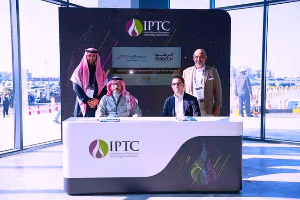How to measure Power Quality

Today's industrial systems are
evaluated in terms of maximising production continuity, a characteristic that
is achieved above all by exploiting process automation to the full. As a
result, we are witnessing an increasing introduction of electronic and IT equipment
in production lines, devices that are very sensitive to Power Quality.
In order to ensure the high
production performance required, industrial systems must be supplied with power
of excellent quality, both in terms of continuity as well as intrinsic
characteristics. In fact, the main causes of unscheduled system downtime,
malfunctions, and serious damage to electrical equipment and infrastructure are
due to poor power quality.
According to statistical studies,
approx. 80% of disturbances due to poor power quality are generated internally
at the end-user (downstream) system. Typically, these disturbances are due to
non-linear loads (inverters, welding/punching machines, drives, robots,
electronic equipment in general) that generate harmonics on the grid, or to the
presence of high-power loads (large motors, for example) that can generate
disturbances.
The remaining 20% of disturbances
come from the Grid (upstream), i.e. the power supplier. Even the most advanced
transmission and distribution systems cannot guarantee supply with absolute
continuity and perfect quality. In this sense, the recent complexity of the
generation world (think of the increasing diffusion of renewables such as solar
and wind power) has certainly had and will increasingly have a significant
impact on the quality of the power supplied.
Measuring the Power Quality of one’s
electrical system is almost never a simple matter. First of all, it is
necessary to identify whether any problems are coming from "upstream"
or "downstream," and then try to understand where, when, and how they
manifest themselves...
In order to collect information and
electrical data to be analysed, it is necessary to carry out one or more
measurements, or better said, veritable measurement campaigns. To carry out
such campaigns, extensive skills are required; it is unlikely that any one
person can cover all areas in a given system. It becomes necessary to involve
several people: an expert in electrical measurements (often also a system
expert), a solution expert (a Power Quality specialist), and the operational
personnel in the company, since there is no one better able to provide the
right information (even if usually the effect is known but not the cause that
generated it).
The measurement campaign is a key point
in solving PQ problems. It is the first step in the investigation process and,
if it is done in the wrong direction, it will lead to failure.
It is important at this stage to
have a comprehensive and in-depth discussion with those who are familiar with
the process and the problems encountered, and to determine what is happening,
in which system situations, at what times/on which days/in which seasons, and
whether the problems started before or after any system changes. If the
problems involve a certain piece of equipment, it would also be a good idea to
talk to the manufacturer to understand the reason of certain incorrect
behaviour.
This phase also includes
documentation checks, going over the wiring diagram with verification that it
is updated to the current state, since this document is fundamental to be able
to identify distorting and sensitive users in order to understand which are the
users affected by any malfunctions. Looking at the bills for an entire calendar
year is also important, especially for systems that are not in continuous
operation. In addition, if there is a supervisory IT system with data logging,
it should definitely be consulted, verifying that the measuring instruments
used provide truthful data.
Before taking the measurements, it
is advisable to carry out an inspection to examine the system. Important
information can be gathered from a "sensory" point of view, by sight
(state of the machinery, presence of evidence of short circuits, overloads,
overheating, presence of pollution of possibly conductive dust, etc), by ear
(humming in the cabinet, and their trend as a function of active loads), and by
"feel" (cabinet temperature, humidity).
At this point, the picture should be
clear and it will be necessary to think about:
- Where
- When
- For how long
- Which measurements to take and with which instruments.
Where: establish in which points of the system the measurements are to be performed: at the terminals of the disturbed loads, at the terminals of the disturbing loads, just downstream of the MV/LV transformer, etc. In systems with complex topology, the choice of where to take the measurement is fundamental; making a mistake in the measurement point means having to "throw away" all the measurements previously taken and starting again from scratch.
When: at full load (or during start-up of the main loads) if the maximum current and voltage harmonic distortion and/or the minimum voltage is to be measured. With minimum load (e.g. evening hours) if possible voltage variations beyond the nominal value are to be evaluated. In the case of problems encountered during certain processes or system states, measurements should be conducted reproducing these conditions.
For how long: measurements aimed at identifying max THDI and max THDV can take less than an hour, if carried out when the system is at maximum load. On the other hand, measurements aimed at voltage or power profiling should be conducted for at least one full week (CEI EN 50160). Statistically based investigations (e.g., voltage gap counts and their duration and depth characteristics) need a continuous measurement of at least a few months.
Which measurements to take and with which instruments: this depends on numerous factors; it is not possible to generalise. It is a case-by-case assessment; the value added lies in the skill of the electrical measurement experts.
Ortea is able to carry out Power Quality measurement services in both industrial and tertiary power systems, aimed at the identification of voltage/current distortion problems or slow/rapid voltage variations, with subsequent identification and technical/commercial proposal of power factor correction, filtering and stabilisation solutions.
Energy & Utilities - Middle East and Africa Market Outlook Report 2024.
This must-have report for industry players offers a thorough understanding of the latest developments, challenges, and opportunities in the region, supported by data, analysis, and expert insights.








